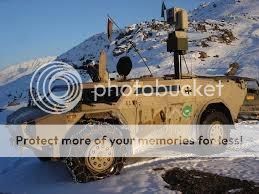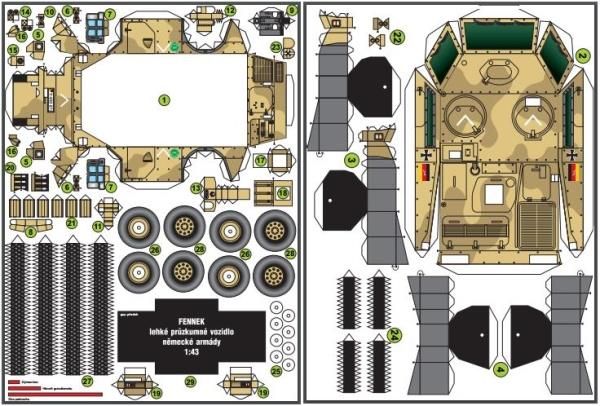
 |
The Real Thing - A6M3 Model 22, flown
by Japanese Ace Hiroyoshi Nishizawa. |
On the Japanese site Assahi 21 you will find several free paper model versions of the Mitsubishi A6M Zero. The Mitsubishi A6M Zero was a
long-range fighter aircraft operated by the Imperial Japanese Navy Air Service, from
1940 to 1945. The
A6M was designated as the
Mitsubishi Navy Type 0 Carrier Fighter, and also designated as the
Mitsubishi A6M Rei-sen and Mitsubishi Navy 12-shi Carrier Fighter. The
A6M was usually referred to by the
Allies as the "Zero", from the
'Navy Type 0 Carrier Fighter' designation. The official
Allied reporting name was
Zeke. When it was introduced early in
World War II, the
Zero was considered
the most capable carrier-based fighter in the world, combining
excellent maneuverability and very long range. In early combat operations, the
Zero gained a
legendary reputation as a "dogfighter", achieving the outstanding
kill ratio of 12 to 1, but by
mid-1942 a combination of new tactics and the introduction of better equipment enabled the Allied pilots to engage the Zero on more equal terms. The
Japaneses also frequently used the type as a
land-based fighter. By
1943, inherent design weaknesses and the increasing lack of more powerful aircraft engines meant that the
Zero became less effective against newer enemy fighters that possessed greater firepower, armor, and speed, and approached the
Zero's maneuverability. Although the
Mitsubishi A6M was outdated by
1944, it was never totally supplanted by the newer
Japanese aircraft types.
During the final years of the War in the Pacific, the Zero was used in kamikaze operations. In the course of the war, more Zeros were built than any other Japanese aircraft.
 |
Ensign Kiyoshi Ogawa, who flew his aircraft
into the USS Bunker Hill
during a Kamikaze mission on 11 May 1945. |
No site japonês Assahi 21 você encontrará várias versões de papel gratuítas do Mitsubishi A6M Zero. The Kamikaze (literally:
"God wind"; common translation:
"Divine wind"), were
suicide attacks by military aviators from the Empire of Japan against Allied naval vessels in the closing stages of the Pacific campaign of World War II, designed to
destroy warships more effectively than was possible with conventional attacks. Numbers quoted vary, but
at least 47 Allied vessels, from PT boats to escort carriers, were sunk by kamikaze attacks, and about
300 damaged. About
14% of kamikaze attacks managed to hit a ship. Kamikaze aircraft were essentially
pilot-guided explosive missiles, purpose-built or converted from conventional aircraft,
without the ability to deliver torpedoes or bombs or attack other aircraft, or
even to land. Pilots would attempt to crash their aircraft into enemy ships in what was called a
"Body Attack" in planes laden with
some combination of explosives, bombs, torpedoes and full fuel tanks; accuracy was much better than a conventional attack, and the payload larger
. A kamikaze could sustain damage which would disable a conventional attacker and still achieve its objective.
The goal of crippling or destroying large numbers of Allied ships, particularly aircraft carriers, was considered
to justify sacrificing pilots and aircraft.
These attacks, which
began in October 1944, followed several
critical military defeats for the Japanese. They had long lost aerial dominance due to outdated aircraft and the loss of experienced pilots. On a macroeconomic scale,
Japan experienced a decreasing capacity to wage war, and a
rapidly declining industrial capacity relative to the United States. The
Japanese government expressed its reluctance to surrender. In combination,
these factors led to the use of kamikaze tactics as Allied forces advanced towards the Japanese home islands.
While the term "kamikaze" usually refers to the aerial strikes, the term has sometimes
been applied to various other intentional suicide attacks. The
Japanese military also used or made plans for
Japanese Special Attack Units, including those
involving submarines, human torpedoes, speedboats and divers. Nazi Germany formed its own group of suicide aircraft pilots called the
Leonidas Squadron, but the
German commanders were more reluctant to use them. The tradition of death instead of defeat, capture, and perceived shame was deeply entrenched in Japanese military culture. It was one of the
primary traditions in the samurai life and the Bushido code: loyalty and honour until death. -
Wikipedia
 |
| Mitsubishi A6M3 Zero wreck abandoned - 1943 |
O Mitsubishi A6M Zero foi o
principal caça da marinha japonesa durante toda a Segunda Guerra Mundial. Ganhou reputação de
invencível no início da participação
japonesa no conflito, com
poder de manobra, alcance e razão de subida inigualáveis por qualquer caça ocidental, tanto de terra quanto embarcado. Foi também o avião usado tanto por
Hiroyoshi Nishizawa,
o maior piloto japonês desta guerra; quanto por
Saburo Sakai, o maior ás japonês que sobreviveu ao conflito. Tinha um
defeito fundamental: para que pudesse ter a leveza e o poder de manobra que tinha, era privado de blindagem em relação à cabine do piloto e ao tanque de combustível, o que a exemplo de outros
aviões de guerra japoneses do início do conflito, o tornava
extremamente vulnerável ao fogo inimigo. Vulnerabilidade esta, típica desses vários modelos de
aviões de combate japoneses, responsável pela morte de muitos tripulantes que ao longo do conflito fizeram falta pela sua quantidade e experiência em
momentos críticos para o Japão. Embora
insuperável no combate individual,
os aliados ainda em
1942 desenvolveram táticas de combate aéreo em grupo que cedo começaram a anular tal vantagem. E logo que modelos aliados equivalentes ou mais aperfeiçoados começaram a entrar em serviço ao final de
1943, foi superado, sendo porém mantido como
principal caça nipônico na linha de frente por falta de uma política industrial que produzisse em grande escala algum de seus substitutos que já estavam disponiveís em meados de 1944, como entre outros o
Kawanishi N1K ou Shiden (também apelidado pelos pilotos ocidentais de
George). O
Zero foi muito famoso também por ter sido
o principal avião utilizado pelos Kamikazes, sendo considerado ainda hoje uma
obra incrível de engenharia que marcou o início da tecnologia de alta precisão japonesa. Criado pelo engenheiro
Jiro Horikoshi.
 |
Lt Yoshinori Yamaguchi's Yokosuka
D4Y3 (Type 33 Suisei) "Judy" in a suicide dive against USS Essex. |
Os Kamikaze Tokubetsu Kōgekitai (literalmente,
Unidade de Ataque Especial do Vento Divino), também conhecidos como
Tokkō Tai (
Unidade de Ataque Especial) ou
Tokkō (
Ataque Especial) foram
unidades de ataque suicida formada por aviadores do Império Japonês contra navios dos Aliados nos momentos finais da campanha do Pacífico na Segunda Guerra Mundial, destinados a
destruir o máximo possível de navios de guerra. Os pilotos japoneses arremessavam seus aviões contra os navios inimigos pois não tinham combustível o suficiente para chegar em uma base segura. Há um relato de um japonês que tentou colidir com um navio no seu avião mas foi abatido antes de chegar ao alvo, sobrevivendo logo após a queda no mar. Isto fez com que ele sentisse muita vergonha por não ter conseguido cumprir sua missão. Existem versões diferentes para
a verdadeira história da criação do tipo Kamikaze. Durante os
combates aéreos da Guerra do Pacífico, muitos pilotos, sobrevoando diretamente os navios inimigos ou instalações em terra, se viram em situações de gravemente feridos ou o avião muito avariado. Em tais situações, muitos optaram enquanto era possível manobrar a aeronave, para um
mergulho suicida contra o objetivo inimigo. Essas ocasiões não raras, ainda não eram consideradas verdadeiramente um
ataque-suicida e sim uma maneira de atingir o objetivo uma vez que
havia mínimas chances de sobrevivência, pois não havia equipamentos de salvamento, tais como, para-quedas. O
ataque Kamikaze foi um assunto totalmente diverso, pois nesta operação, o piloto ou a tripulação inteira de um avião atacante, eliminava até a mais remota probabilidade de salvamento, uma vez empenhado no mergulho mortal contra o inimigo.
A morte era a companheira do piloto Kamikaze, tal como foi, a do
Kaiten - torpedo humano empregado nos últimos estágios da guerra.
O caça Zero (Mitsubishi A6M Zero), durante muito tempo a principal arma da marinha japonesa, representou o principal papel para estas atividades. -
Wikipedia
Link: WW2`s.Mitsubishi.A6M.Zero.Kamikaze.Japanese.Aircraft
More Paper Models of WW2 Aircraft and Planes related posts:
WW2 P51 Mustang and Lublin R-XVI Airplanes - by Kartonmodelle
Polikarpov I-16 Russian Plane - by Modele-Kartonowe - Avião Russo
RWD-25 Poland Aircraft - by Modele Kartonowe - Avião Polonês WW2
Link Trainer Flight Simulator - by Currell Graphics - 1º Simulador de Voo

























